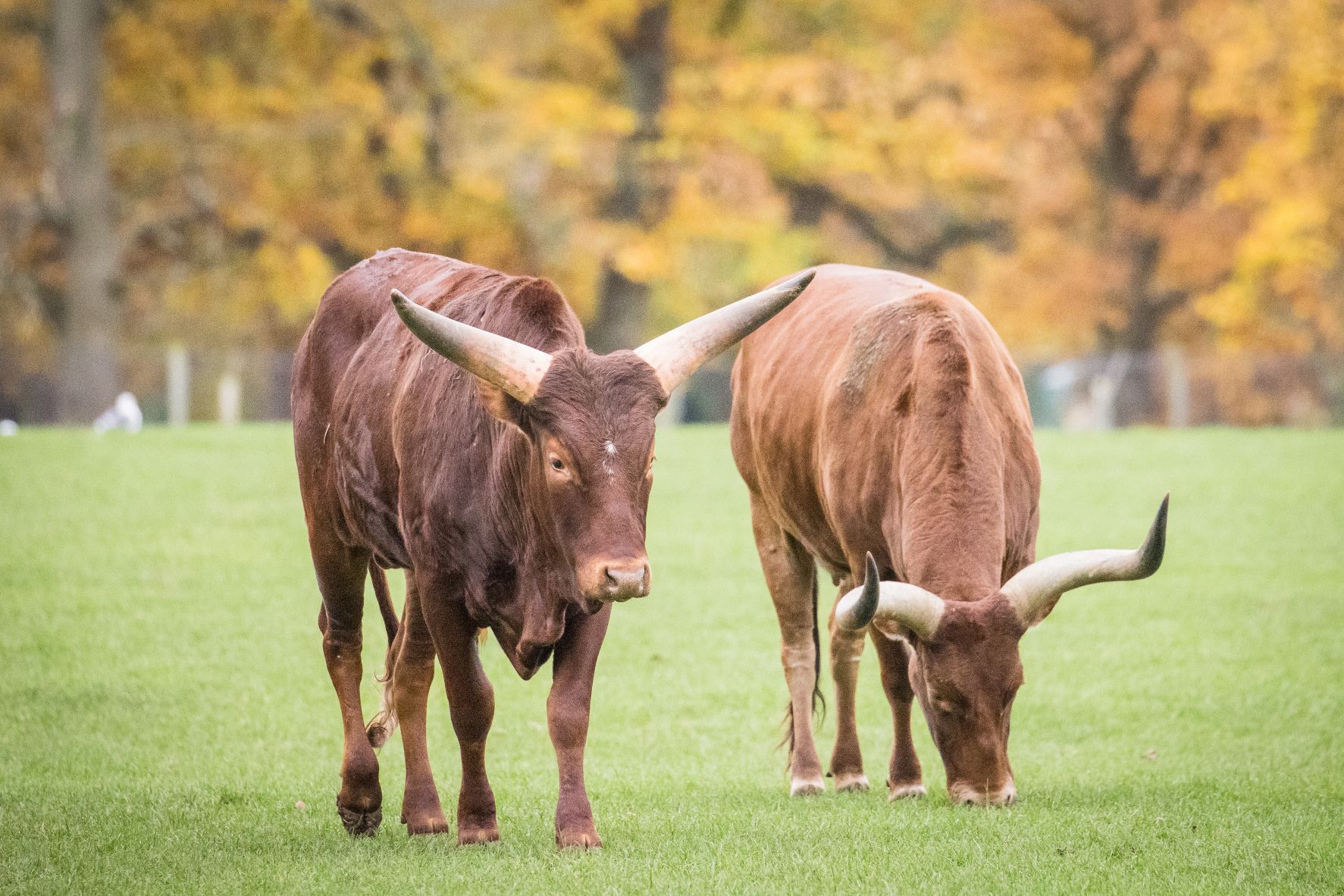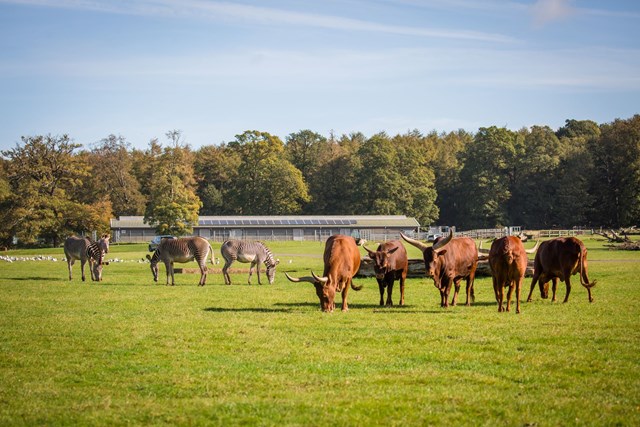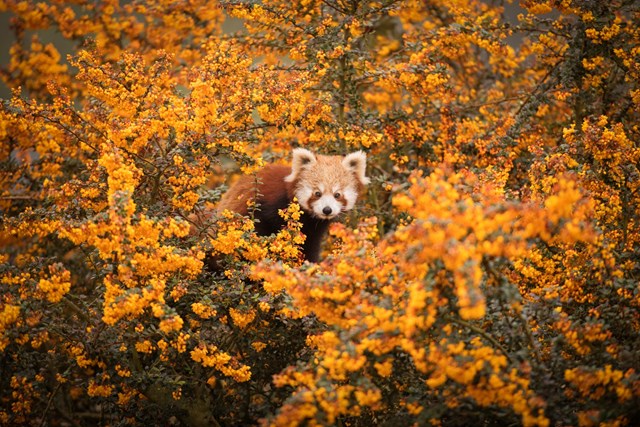Overview
The Ankole cattle are named after the Watusi tribe of Africa and are a domesticated species. It is thought that they are a cross between two different breeds of cattle that migrated to East Africa around 1000 BC.
The herd of Ankole cattle at Woburn Safari Park can be seen in the Savannah section of the Road Safari; you can see them roaming freely in their 50 acre reserve with a number of other African species including Southern white rhino and Grevy's zebra.

All about us
| Distribution: | Uganda, Tanzania, Rwanda, Burundi and in Eastern Africa |
|---|---|
| Habitat: | Forests, meadows and rich grasslands |
| Height: | 5.5 to 6.6 ft at the shoulder |
| Weight: | Cows 500 kg and bulls 700 kg |
| Lifespan: | 20 years |
| Threats: | Predation by lions and leopards |
About us
Scientific name: Bos taurus
Ankole cattle are a very active and highly social species that prefer to live in a large herd for company and protection. Due to predation these herds have very strong protection instincts and adults will bed down in a circle facing outwards with calves kept safe in the centre. During the day calves will stay close to the herd or at least remain close to one adult. If the herd become alarmed the calves will instinctively run in front of the horns of a retreating mother or under her belly for protection. Some individuals can be quite aggressive and will charge other members of the herd and push the subordinate animals out of the way with their horns.

Ankole cattle facts
Ankole cattle are usually solid in colour but they can also be spotted or speckled. A rusty dark red coloured coat is predominantly seen although dun and black can also occur. Both the males and females have the largest horns of any specie of cattle and they can spread nearly 2 metres across. Calves horns will develop at around 2 months of age and by 18 months they are large but quite light and hollow. These horns help them to disperse excess body heat as blood circulating through the horn is cooled and then returned to the body. This helps them to cope in temperatures ranging from 20 to 120 degrees on a daily basis. To help support the weight of the head and their long horns they have a large muscle on the top of their shoulder and underneath their head on the lower neck is a flap of skin called a dewlap.
Ankole are grazers and they feed on sparse grass and have a very limited supply of water. It is their digestive system that has the ability to utilize this poor quality roughage and limited quantities of water enabling them to survive in their habitat.
The gestation of an Ankole is approximately nine months after which a single calf is born weighing between 30 to 50 pounds. They will then reach sexual maturity at around the age of 18 months of age.
Ankole cattle are a domesticated species and their biggest threat is predation by lions and leopards.

